Introduction
Flexible packaging is experiencing rapid growth in the global packaging industry. This type of packaging is highlighted by Fortune Business Insights, which reports that the global flexible packaging market was worth USD 25.87 billion in 2024 and is expected to reach USD 40.61 billion by 2032, with a CAGR of 5.96%. According to Smithers, the world consumed 33.5 million metric tons of flexible packaging in 2023, which had a market value of USD 29.12 billion according to 2022 pricing. The industry is projected to increase to USD 34.16 billion by 2028, showing a CAGR of 3.2%.
The main reasons for this growth are as follows:
- ● The food and beverage industry continues to require packaging that is lightweight and offers better freshness and protection.
- ● More people require their stores to be portable and flexible because of the rise in e-commerce.
- ● Increased attention from consumers about recyclable packaging and following the circular economy.
With flexible packaging, there is less waste, products last longer, and shipping is easier. Thanks to plastic bags, metalized film, digital printing, and multi-functional barrier layers, products can be well protected and still look attractive on store shelves.
The next sections will discuss what flexible packaging is, the materials it uses, how it differs from rigid materials, where it is applied, and the testing requirements needed for this market.
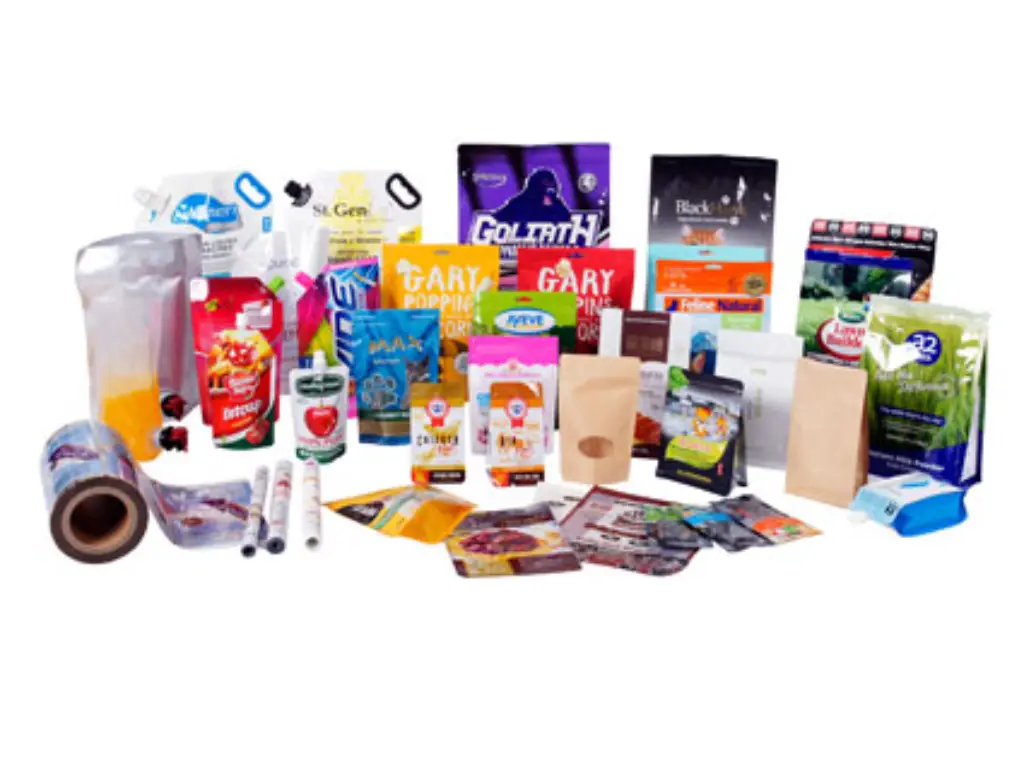
What Is Flexible Packaging? A Clear Definition
Flexible packaging means any packaging that is made from materials that can bend or change shape without breaking. It is able to change its shape slightly under pressure, but it still protects the brain. Some common flexible packaging materials are polymer films (polyethylene and polypropylene), aluminum foil, polyvinyl chloride, and multi-layer laminates. These structures usually include adhesive layers, barrier films, and print layers to suit different products and their requirements.
It is appreciated for helping to cut down on weight, improve how products are stored, and keep them fresh for longer. The food industry, personal care, and industry all use this material, which is available in pouches, sachets, wraps, and rollstock film. The packaging format is chosen according to how the product will be packaged, its sensitivity, and what is needed for production.
The main purpose of flexible packaging is to shield its contents from oxygen, moisture, UV light, and damage. It should be compatible with the latest printing technologies and follow new packaging design trends. The packaging industry values its strength because it is made up of several layers that help it be durable, useful, and eco-friendly.
Exploring the Main Types of Flexible Packaging
Flexible packaging uses flexible materials that can change shape to fit the product inside. Its popularity in food, pharmaceuticals, and personal care comes from its ability to be used in many ways, its low weight, and the fact that it is very efficient. To learn about its technical background, we should examine the types of flexible packaging and the materials they are made from.
Structural Types: From Utility to Shelf Impact
Flexible packaging is designed to meet the needs of sealing, protecting the product, making the product attractive, and handling logistics. Examples of common formats are:
- ● Pouches: Stand-up pouches (Doypacks), flat pouches, and spouted types are available. They are widely used in the food, beverage, and personal care industries. Because they are small and work well on high-speed lines, they are often used for both single-serve and multi-use packaging.
- ● Films & Wraps: Films and wraps are commonly used in both vertical and horizontal form-fill-seal systems, mainly when production is high, such as for snacks. Flow wraps and lidding films are used for secure sealing and for displaying the brand’s logo. Chip bags are a good illustration of this.
- ● Shrink Films: Used as a secondary layer of packaging, mainly for beverages, household goods, and multipacks. Heat makes the film fit the product perfectly, giving it protection and allowing it to be used for display.
Every structure is selected not only for convenience but also to meet real technical needs: protection from air and water, proof against tampering, and lowering the cost of making many products.
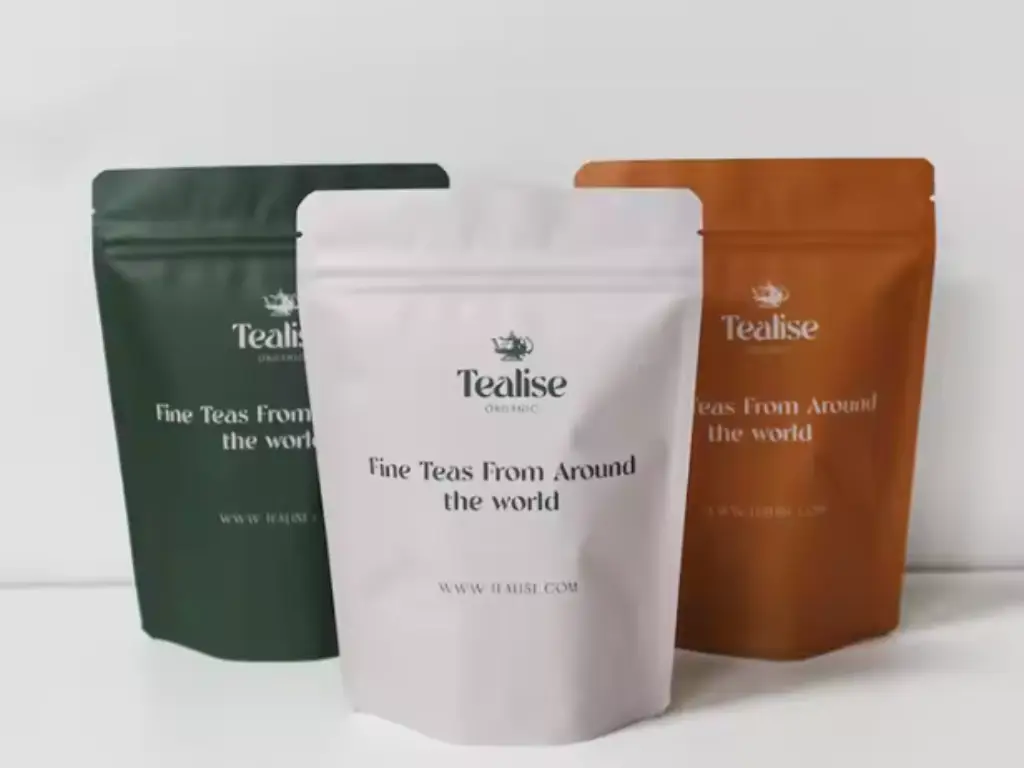
Material Systems: Engineering Performance Layer by Layer
All flexible structures rely on special materials, usually in multiple layers, to achieve the exact performance they need. The choice of these materials depends on their ability to resist barriers, how they behave mechanically, if they are compatible with seals, and how sustainable they are.
- ● Polymer Films are still the mainstay of the industry.
- Polyethylene (PE) is good for inner layers because it is soft and seals well. Trash bags are made from this material.
- Polypropylene (PP) gives material strength and prevents moisture from getting in.
- PET gives the material stability and makes it suitable for printing.
- ● Aluminum Foil is the best when it comes to blocking out air and moisture. It is needed in products that must last a long time or stay protected from light, oxygen, and vapor, such as dehydrated foods and pharmaceuticals.
- ● Metallized films are often chosen instead of foil because they are more affordable and easier to work with. You can find them in many snack and dry food packages.
- ● Paper-based laminates provide advantages in touch, appearance, and sustainability, mainly for dry food, tea, or bakery packaging. Yet, they usually need to be coated or laminated to meet the required barrier standards.
- ● Biodegradable & Compostable Materials (e.g., PLA, cellulose derivatives) are emerging under regulatory and brand-driven sustainability goals. Adoption remains limited by performance constraints, but innovation is progressing. These are often made from renewable resources.
Selecting the right material structure is always a thoughtful decision that takes into account protection, efficiency, cost, and now, the environment. It is the engineering in the flexible packaging that determines its worth, whether it contains shelf-stable food or recyclable personal care products.
Flexible vs. Rigid Packaging: Key Differences
After learning about flexible packaging, you should also compare it with traditional rigid packaging. By comparing, we can see the importance of flexible packaging in real situations, especially as the packaging sector works on being efficient, low-carbon, and sustainable.
For many years, glass bottles, metal cans, and hard plastic containers have been the main forms of packaging for various products. They are strong, simple to stack, and give good protection in particular situations. Still, as flexible packaging materials and technologies improve, flexible packaging stands out in several areas, mainly in how it transports goods, how it can be designed, and how it makes use of materials.
| Comparison Dimension | Flexible Packaging | Rigid Packaging |
| Structural Features | Lightweight, deformable, highly adaptable | Fixed shape, less deformable |
| Material Usage | Less material needed, supports material reduction | Higher material consumption, higher energy demand |
| Transportation & Storage | Easy to compress and stack, lowers logistics costs | Occupies more space, less economical in transportation |
| Packaging Form | Supports various styles such as stand-up pouches, zipper bags, and shrink films | More limited forms, lower space utilization |
| Sustainability | Better for source reduction, lightweighting, and recycling | Often non-degradable, difficult to recycle |
| Application Scenarios | Food, personal care, pharmaceuticals, ready-to-eat products, and small consumer products | Large-volume liquids, volatile substances, and long-term storage |
Because it is light and easy to shape, flexible packaging satisfies the needs of today’s brands for both usefulness and attractive design. Thanks to digital printing, QR codes on packaging, and renewable materials, flexible packaging can now be used for branding and sharing information, in addition to protecting products.
It’s true that rigid packaging still has its own unique benefits. In fields where sealing, gravity, or chemical resistance are important for a long time, it is still essential, such as in packaging for some medical, industrial, or luxury food products.
The decision should be made by considering the product’s features, how it will be used, how it will be distributed, and the brand’s sustainability approach. In reality, flexible and rigid packaging can be used together based on what is needed and may be combined in hybrid forms to balance different aspects of packaging.
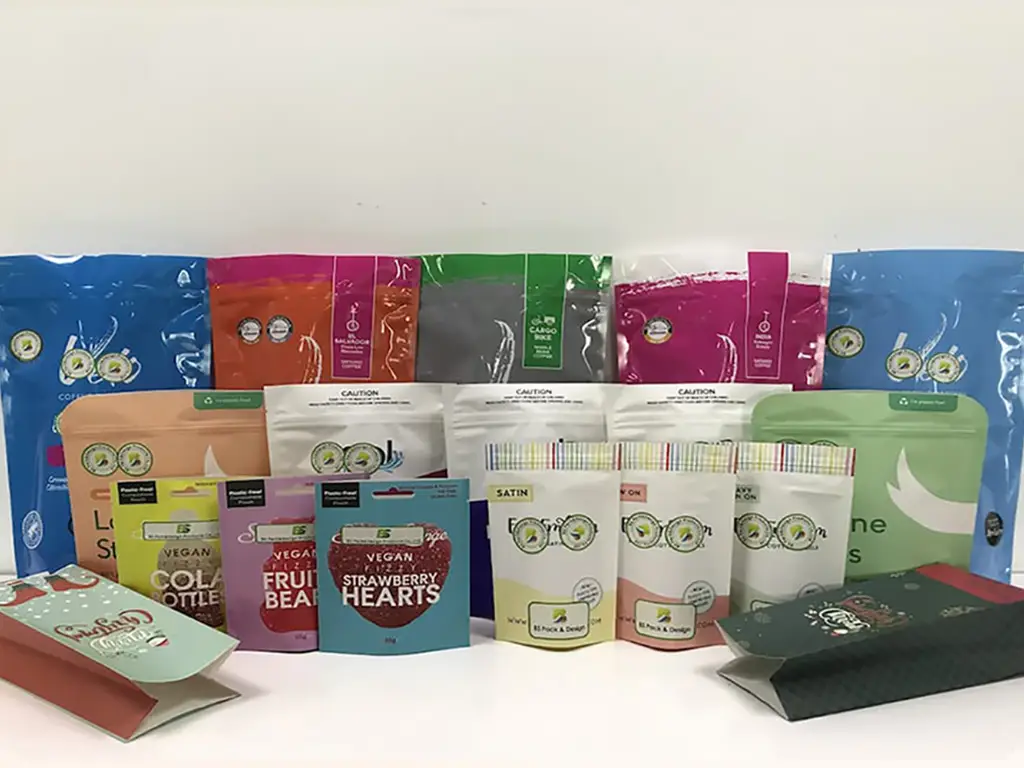
Benefits and Challenges of Flexible Packaging
Many industries rely on flexible packaging because it is efficient, versatile, and fits well with today’s supply chains. Even so, there are technical and environmental issues that need to be considered.
Key Benefits
- ● Flexible packaging is light and takes up less room than hard containers, so it helps lower costs for storage, shipping, and logistics.
- ● Reduced weight means that less fuel is needed for transport, and the overall distribution cost is lowered.
- ● With improved printing, companies can add better graphics and customize their packaging, making their products more attractive and engaging to buyers.
- ● Multi-layer packaging helps keep moisture, oxygen, and UV light away, which keeps the product fresh and of good quality for a longer period. This is an important function of flexible packaging.
- ● Features like resealable lids, spouts, and simple opening make the product simple to use and waste less.
- ● Flexible packaging uses less material and helps the environment by supporting recycling efforts.
Key Challenges
- ● It is often hard to separate multi-material structures, so recycling them becomes more complicated unless there is specialized infrastructure. It is a significant issue when it comes to waste management.
- ● When materials are thinner, they might not protect as well in some situations as rigid packaging does.
- ● There is a risk that flexible materials can interact with what is inside the package, which could change the flavor or stability of the product, mainly in food and drug products.
- ● Because the structures are thin and there are many layers, it is necessary to ensure strict quality control for a reliable seal.
How to Choose the Right Flexible Packaging
To pick the right flexible packaging, you should know your product’s requirements, match them with available materials, and check that it works well during its entire lifespan. Here are some important considerations to help you decide what to do based on the facts.
1. Define Your Product’s Specific Requirements
First, determine the necessary functions that keep the product safe and give consumers a good experience. You should keep in mind these important aspects:
- ● Barrier Protection: Does your product require shielding from moisture, air, or light? As an example, snack foods and pharmaceuticals usually need packaging that blocks moisture and oxygen.
- ● Shelf Life: Check how long the product needs to be stored and determine if external elements (like humidity and UV rays) can affect its lifespan.
- ● Temperature Sensitivity: Will the product be kept in a place where it can get hot or cold? Dairy and cosmetics may be best packed in containers that can withstand temperature changes.
- ● Sustainability Goals: Is your company dedicated to being sustainable? If your brand focuses on sustainability, try using biodegradable or recyclable materials.
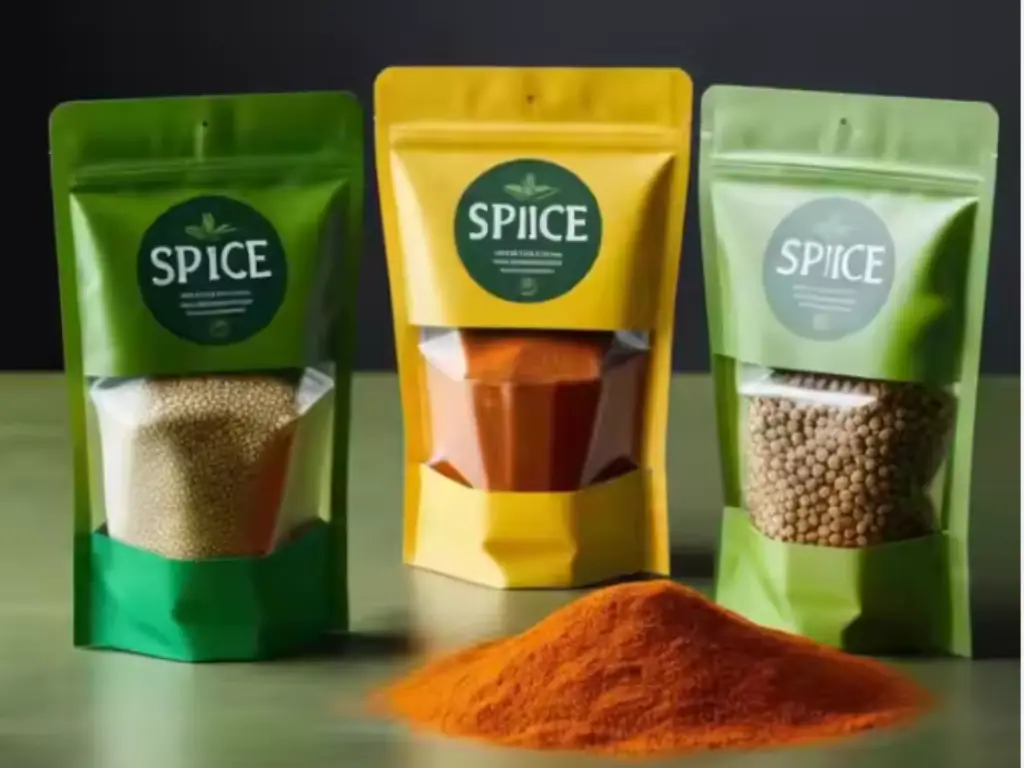
2. Match Packaging Format to Product Functionality
The design of flexible packaging is usually based on how the product is handled, kept, and displayed. Take time to consider these things when making your decision:
- ●Type of Product: Solid items like snacks are best packaged in pouches, while liquids may be put in pouches with spouts or stand-up pouches. If you need to package many items, rollstock film is a better choice. It includes a variety of products.
- ● Opening and Reseal Features: If the product is something that needs to be opened and closed often (for example, granola bars or pet food), add zipper seals or tear notches to make it easier for users.
- ● Transportation and Storage: How will your product be stored and displayed in the store? Stand-up pouches are useful in stores, while flat pouches are better for sending large amounts of products.
3. Evaluate Materials Based on Product and Environment
When you have decided on the product and its packaging, look at the materials. All materials have their unique qualities.
- ●Polyethylene (PE): It is flexible and does not allow moisture, making it suitable for products that do not last long on the shelf.
- ● Polyester (PET): It is excellent at blocking oxygen and moisture, so it is used for snacks and cosmetics.
- ● Aluminum Foil: Provides excellent protection for food and helps food last longer, making it popular in premium packaging.
- ● Biodegradable Materials: They are now more accessible for eco-friendly products, though they cost more and do not provide the same protection as other materials. They are available in different thicknesses.
4. Test and Align With Production Processes
When the material and format are chosen, check if it is possible to make the product. Because different materials are used in flexible packaging, make sure the packaging you choose fits well into your production process.
- ● Form-Fill-Seal is commonly used for pouches and bags and requires materials that can work well in automated systems.
- ● Heat Sealing: verify that the materials you have chosen can make seals that do not harm the product.
- ● Printing and Branding: If you want to customize the material, check that it can handle your printing methods (digital, flexo, etc.). Usually, this process uses a digital press.
5. Cost-Effectiveness and Long-Term Sustainability
Lastly, make sure your packaging is affordable and environmentally friendly. Think about the following points:
- ● Material Costs vs. Packaging Efficiency: While high-performance materials might have a higher upfront cost, they may reduce waste, enhance shelf life, and provide better protection.
- ● Sustainability Considerations: If sustainability is critical for your brand, investigate options for recyclable or compostable materials, though they may come with a cost premium.
6. Work with Experienced Packaging Partners
It is important to rely on seasoned flexpack converters and packaging partners to help you meet all the needs and standards for your packaging. The right packaging supplier can help with both testing the strength of materials and finding the best way to package products for both cost and performance.

Baishen Pack: Your Trusted Partner in Premium Flexible Packaging
Since 2012, Baishen Pack has empowered global brands with high-quality custom flexible packaging. We specialize in food-grade, FDA/SGS/ISO certified materials, ensuring product safety and compliance. Leveraging advanced HP Indigo digital printing, we achieve up to 97% PANTONE® color matching for stunning shelf appeal. Our industry-leading turnaround delivers digital print orders in just 7-10 business days – significantly faster than competitors. With flexible MOQs starting at 500 units, we support all scales. Our rigorous in-house QC, including comprehensive barrier and durability tests, guarantees superior moisture, oxygen, and puncture resistance. Choose Baishen Pack for ultimate product protection, extended shelf life, and a decisive market advantage.
Flexible Packaging Applications Across Industries
Because it is strong, efficient, and can be customized, flexible packaging is necessary for many industries today, including food and pharmaceuticals. These are some of the main things it does.
- ● Food & Beverage
Flexible food packaging is popular for snacks, meats, and meals that are ready to eat because it helps preserve freshness, keeps food longer, and is easy to use. Barrier films help keep oxygen and moisture out, and light materials help lower the cost of shipping. Digital printing makes it possible to use clear labeling and sustainability messages.
- ● Pharmaceuticals & Medical Supplies
Product safety and compliance with strict rules are maintained by using sterile pouches, blister packs, and protective wraps. Polymer films and aluminum foil are flexible and can prevent UV, moisture, and contamination, so they are suitable for use with medical products that need protection.
- ● Cosmetics & Personal Care
It is common to find lotions, shampoos, and face masks in pouches or sachets. They provide strong seals to keep the ingredients safe and ensure premium quality printing for the brand. Today, a lot of brands make their products from recyclable or biodegradable materials to help the environment. Such films can be made from unsupported films or thermal laminates.
- ● Consumer Goods & E-commerce
When it comes to detergent pods and clothing, flexible packaging is a good choice because it is light, strong, and inexpensive for direct-to-consumer shipping. Custom printing and fast design changes are perfect for promoting e-commerce and making small runs.
- ● Industrial & Chemical
Flexible packaging is used for chemicals, lubricants, and construction materials because it is very durable, puncture-resistant, and takes up less space. It guarantees that reactive or hazardous materials are stored and transported safely, while also making handling easier. This often involves resisting air pressure.
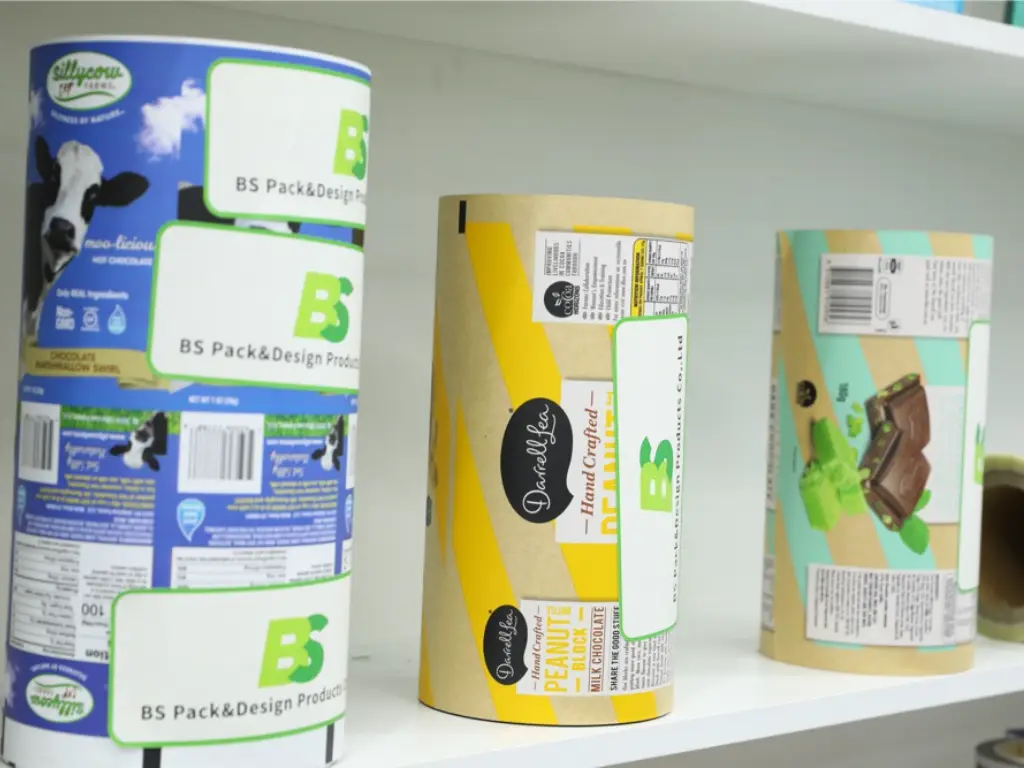
Emerging Trends in Flexible Packaging
The flexible packaging industry is changing a lot due to new consumer demands, efforts to be sustainable, and advances in technology. Here are some important trends that will shape the future of this lively sector:
Sustainable Materials and Recyclable Structures
Sustainability is now a key requirement in the packaging industry. Many brands are now switching from using multiple materials together in laminates to using just polyethylene films, which are simpler to recycle. As a result, it becomes easier to recycle and fits with what customers are looking for in environmentally friendly packaging.
Compostable and Biodegradable Alternatives
Flexible packaging made from PLA, starch blends, and cellulose films that can be composted or biodegraded is becoming more popular. They are created to decompose when exposed to certain conditions, making them a better choice for products that are used for a short time, like food and personal care items. Still, most of these materials can only be composted in industrial facilities, so brands must confirm they are following the right waste management rules.
Lightweighting and Material Efficiency
Reducing the amount of material in packaging is still a major trend. Thanks to new materials, scientists can now make thinner films that are as protective as the thicker ones. Using less material in packaging means there is less waste and it costs less to ship, while also lowering the amount of carbon released into the air.
Integration of Smart Packaging Technologies
Using QR codes, NFC chips, and RFID tags is turning flexible packaging into a way to communicate. They improve the ability to track products, interact with consumers, and handle the supply chain. For instance, consumers can use a QR code to get more information about a product or recycling, and RFID helps brands track their goods in real time and prevent counterfeiting.
Growth in E-commerce Applications
E-commerce has greatly affected the way packaging is designed. Direct-to-consumer shipping can now rely on flexible packaging that is both durable and light. Tamper-evident seals and padding in the packaging keep the product safe during shipping, and custom printing lets brands design unique and premium packaging. More and more e-commerce companies are choosing flexible packaging because it is economical, safe, and looks attractive.
How to Test the Quality of Flexible Packaging
Having high-quality, flexible packaging is important for safeguarding the product, ensuring its safety, and building customer trust. Quality control is done by using standard tests that check how flexible package materials perform in different situations. Here are the main testing methods that are commonly applied to flexible packaging.
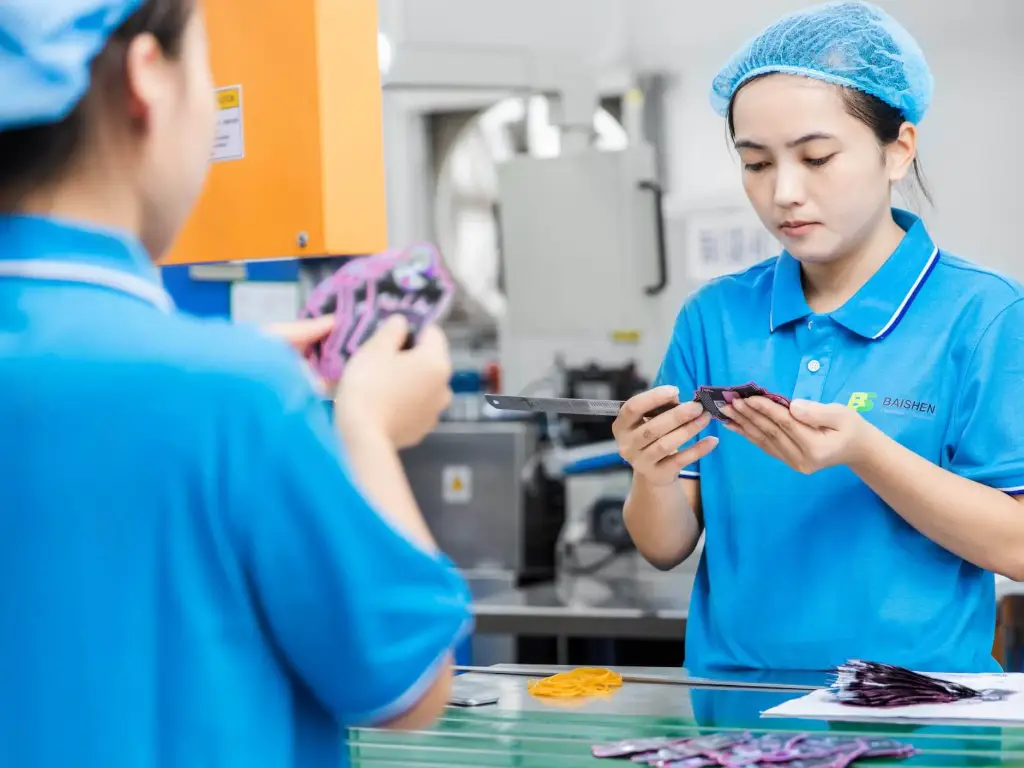
Melt Flow Testing
Melt flow testing is used to find out how fast a thermoplastic material flows when heated and pressed. This test is necessary for determining whether packaging films are suitable for extrusion and film blowing. Having the same melt flow properties guarantees that films will be even, sealing will be reliable, and different layers of materials will work well together, even if they come from different suppliers.
Heat Seal Strength Testing
Heat seal strength testing checks if the seals made by heat and pressure between two film layers are strong. Having strong seals is necessary to stop products from leaking, getting contaminated, or losing their shelf life. This test checks if the seal can handle the stresses of shipping, storage, and handling and still keep the package safe during the product’s entire lifecycle.
Ink and Coating Durability Testing
These tests check how well printed and coated parts of flexible packaging stick, resist abrasions, and last overall in the printing process. It is very important to make sure that barcodes, branding elements, and QR codes are legible and not damaged so that both identification and consumer interaction are not affected. Testing works for digital press, flexographic, and rotogravure printing methods and ensures that both the performance and appearance are maintained.
Barrier Property Testing
Barrier tests check if the material can stop oxygen, water vapor, and light from entering, which can influence the quality and life span of the product. Moisture-sensitive foods, light-sensitive pharmaceuticals, and similar products need to be protected by high-barrier packaging. Standard tests are used to check how well the barriers perform after long-term exposure to ensure they are effective during storage and transportation.
Mechanical Properties Testing
Mechanical testing checks the strength of packaging materials when they are subjected to pressure. Some of the most important factors are tensile strength, resistance to punctures, how fast tears spread, and how much the material can stretch. They are necessary to check if a package can handle transportation, stacking, and outside influences like air pressure and external factors. Mechanical testing helps manufacturers use less material without lowering the product’s performance, which is good for the environment and helps cut costs.
Final Thoughts: Is Flexible Packaging Right for Your Business?
Flexible packaging is useful for many products and industries, such as food, pharmaceuticals, personal care, and industrial items. Because it is lightweight, adjustable, and can be used with digital printing and smart tracking, it is a popular choice for brands that want attractive and cost-effective packaging. It also matches the rising demand from consumers and authorities for more sustainable choices, especially when recyclable or single-material products are used.
Still, there are some drawbacks to using flexible packaging. Problems such as not enough recycling facilities, difficulties separating materials, and different regulations can reduce the environmental performance of multi-layer or foil-based laminates. If a business aims for sustainability or zero waste, it is important to work closely with flexpack converters and those who know materials well. In any format, it is important to test products well to ensure they are safe, meet standards, and last for a long time. If all these points are taken into account, flexible packaging can be an excellent and future-proof option.

